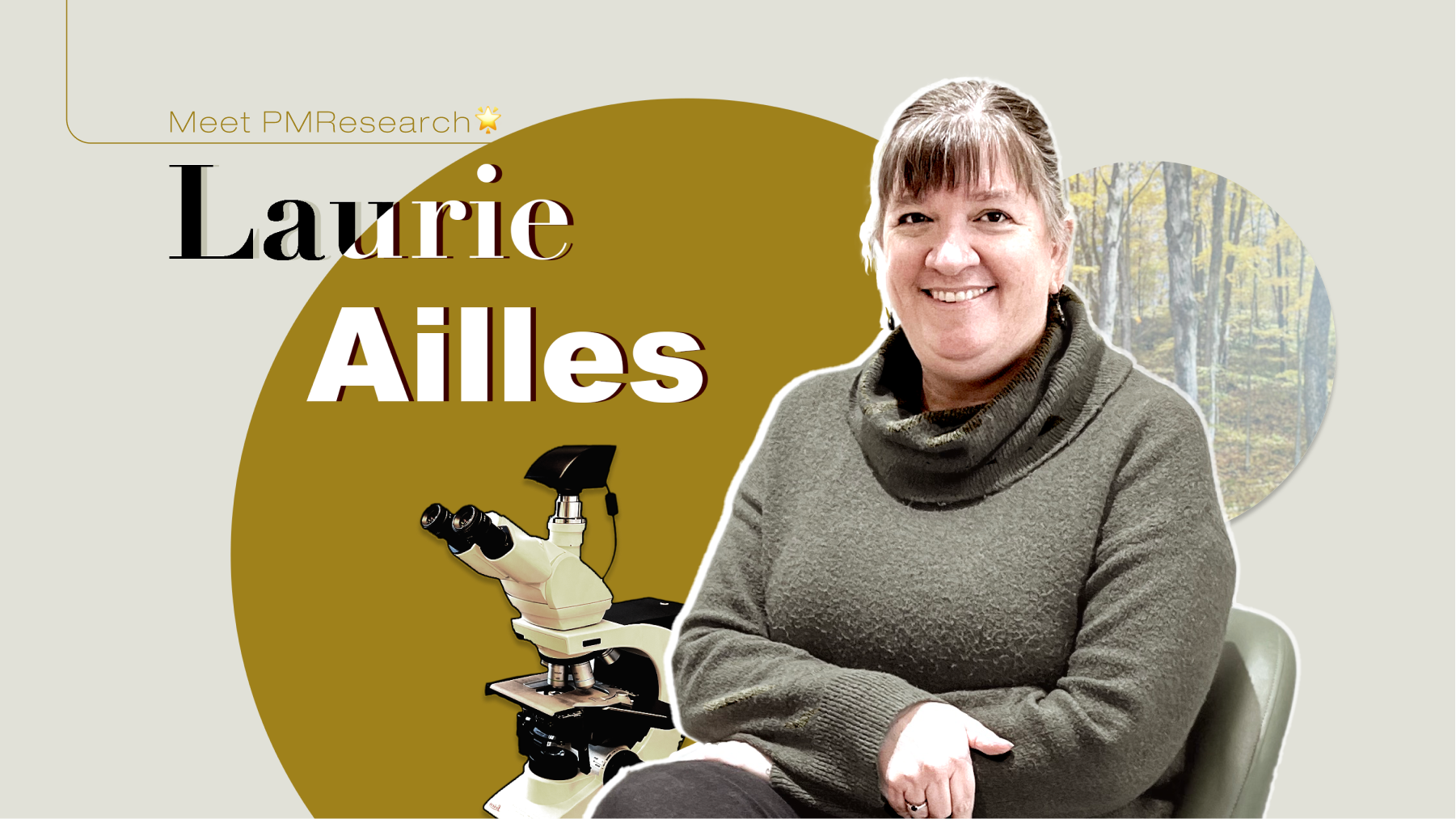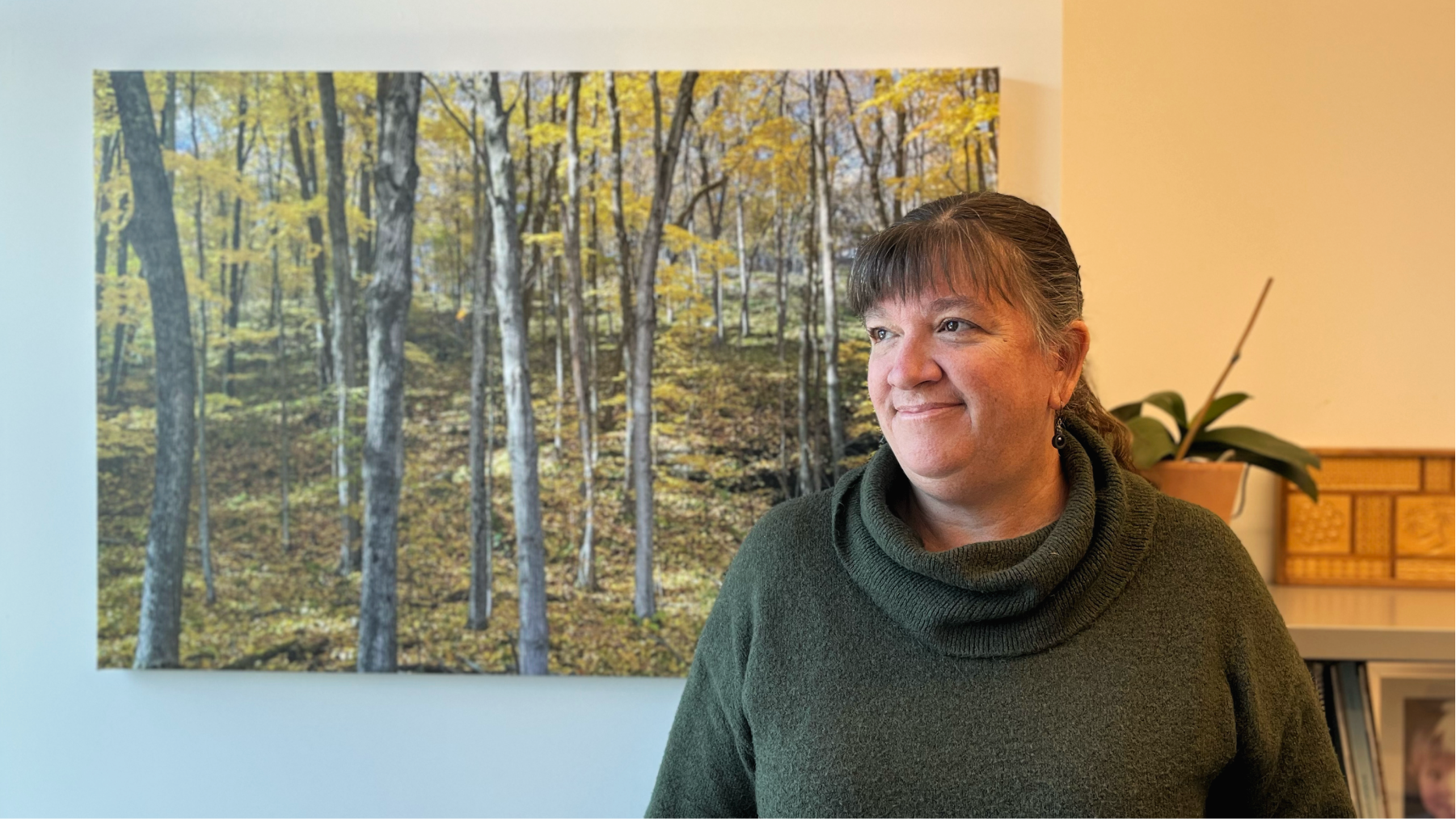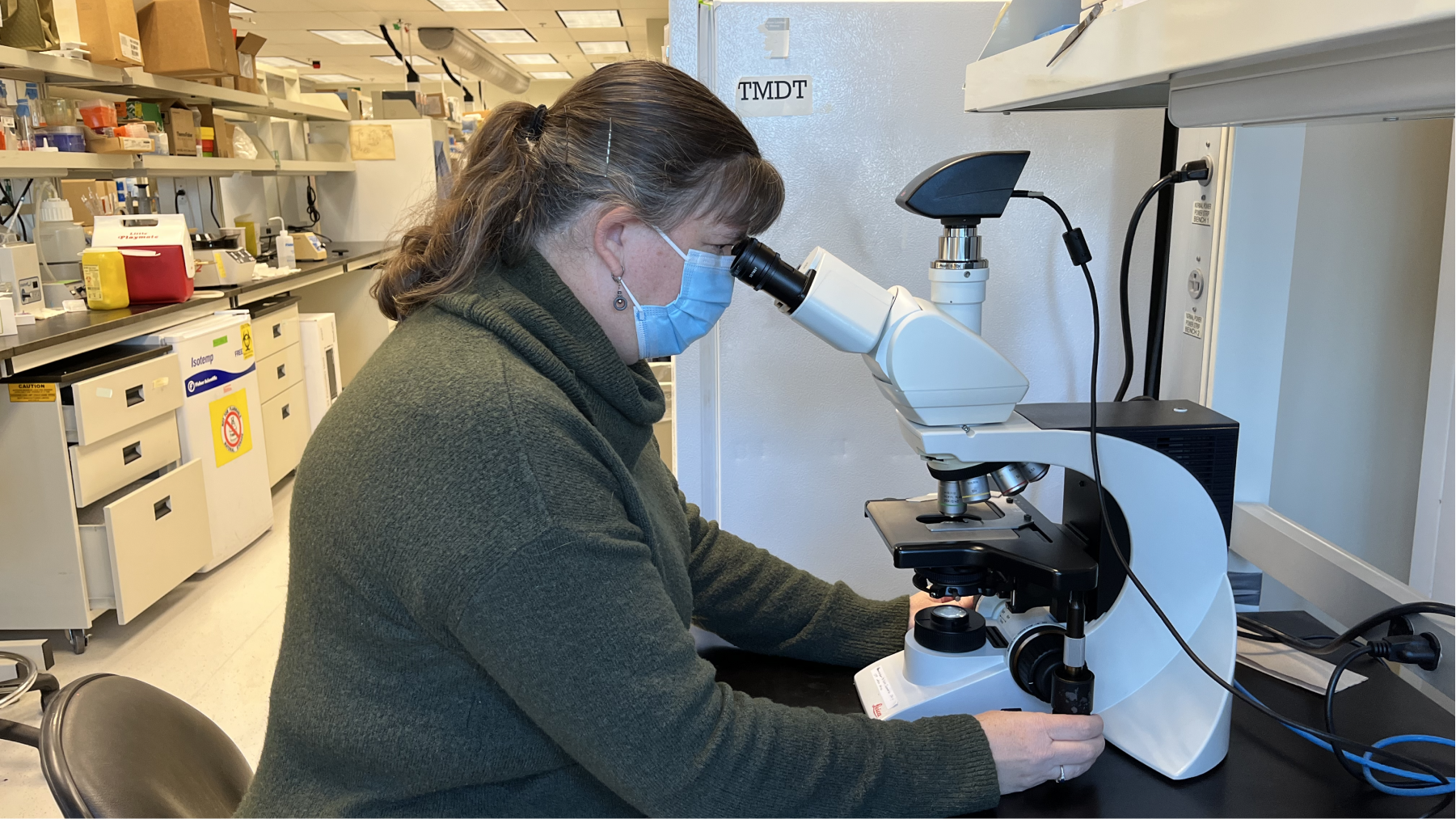
Dr. Laurie Ailles is a Senior Scientist at the Princess Margaret Cancer Centre and an Associate Professor in Medical Biophysics at the University of Toronto. Her research is focused on head and neck cancer, ovarian cancer, and cancer-associated fibroblasts. A key aim of her program is to identify new treatment targets for solid tumours.
Travelling as an early education
When Laurie was growing up, she was in a different school almost every year. When she was very young her father began working for the Canadian International Development Agency—an organization that has since become part of the Department of Foreign Affairs. Because of her father’s job, the family moved to Nigeria when Laurie was just two years old. This was just the start for her—by the time she was 16, she had already lived in Nigeria, Australia, South Africa, Iran, the Caribbean and various provinces in Canada.
As a young child, Laurie never felt a ‘nomadic’ life was an issue for her. “I never lost any years or struggled in school,” says Laurie. “Travelling itself is its own kind of education.”
During her childhood, Laurie became an avid reader. Reading broadly, coupled with her extensive travels introduced her to many different cultures around the world. This fueled her lifelong drive to always be open-minded, flexible and adaptable.

Dr. Laurie Ailles is pictured in her office standing in front of her own printed photography of the woods near her cottage, where she enjoys canoeing, fishing and hiking.
An intertwining of passion and serendipity
“It was never really a question for me, where my interests lie,” says Laurie. “From a young age, I really enjoyed animals and nature, and my fondness for the life sciences continued to grow in high school biology class, where I became fascinated by topics like evolution, cell biology and DNA.”
She also acknowledges that there is serendipity coming into play while navigating a career in science. A clear direction does not always guarantee a clear path. After finishing undergraduate studies in biology, she was not entirely sure what she wanted to do, so she got a job as a technician in a pathology lab. It turned out that she loved her work there and eventually completed a master's degree in that very same lab.
After four years of pathology research, while seeking a change and more meaning in life, Laurie laid her eyes on cancer research. “While I didn’t have any family members affected by cancer, I felt that it was an area where I could both study a fascinating field and also have the potential to make a difference to thousands of people.”
During her PhD studies at the Terry Fox Laboratory at BC Cancer, Laurie discovered a newfound passion. It happened when she analyzed her first patient samples for a project focused on leukemia.
“I found it super exciting because I really felt that my work could have patient impact. I was receiving leukemia cells that, an hour ago, were circulating in a patient’s body, and was now performing experiments with them, trying to understand the biology of why they became cancer and how we can treat it.”
This early experience has shaped her current work—even till this day, her research still uses patient-derived specimens.
It was not until her second postdoctoral position in the Weissman Lab at Stanford University that she established her specialty in head and neck cancer. However, according to Laurie, this field of specialty was not a conscious choice. It was serendipity that struck again.
In the 1990s, Dr. John Dick’s lab at the Princess Margaret Cancer Centre discovered that a small portion of leukemia cells have stem cell-like behaviour and drive cancer growth. In the early 2000s, it became clear that this concept of cancer stem cells may also apply to solid tumours (abnormal cell growth from solid organs, as opposed to blood cancers). This inspired her to investigate stem cells in solid cancers. The Weissman Lab, known for its stem cell and leukemia research, received many requests to examine solid tumour samples. Laurie was able to study many different cancer types, including ovarian cancer, brain cancer, melanoma, and head and neck cancer.
“Head and neck cancer research was the one that moved forward the quickest, so I ended up establishing myself in that field,” says Laurie.
Her background in pathology led her to notice that stem cells in head and neck cancer interacted closely with surrounding fibroblasts. Therefore, another interest she developed was to find out how these cancer-associated fibroblasts interact with the cancer stem cells and promote tumour growth.
“This is how science works—you stumble upon an interesting observation and you follow that path. It wasn’t necessarily always a mindful choice, but you follow the path where the results lead you.”
Current research
The Ailles Lab’s current research continues to focus on using patient-derived tissues in experimental models. For example, her lab obtains patient tumour tissue biopsies and uses them to characterize the individual tumours at the molecular level by studying their response to drugs, among other things. This approach enables the researchers to identify the similarities in cancers between patients, so that each individual can be assigned to the most appropriate treatment for their specific disease.
As mentioned, her lab also studies fibroblasts—a normal cell type that gets hijacked by cancer cells to promote the cancer’s ability to grow, resist treatment and spread (i.e., metastasis). Laurie and her laboratory are currently focused on better understanding how cancer cells and fibroblasts “talk” to each other, so that they can identify new anticancer therapies.

Dr. Laurie Ailles is pictured in her lab looking through a microscope that her lab researchers use for analyzing patient-derived specimens.
Beyond cancer research
Laurie, along with her teenage son and loving and supportive family, has been in Toronto for 15 years. According to her, being a woman should not stop anyone from developing a career in science. While juggling a science career with parenting and home life is challenging, she has never felt that this has held her back. “The situation has greatly improved in recent years, with women in science having greater flexibility to conduct their research in whatever way works best for them.”
At the end of the interview, we asked Laurie what she would like to know if she was given a peek into the future. Beyond the ultimate goal of curing cancer, Laurie also mentioned her concerns about climate change.
“I’m worried for my son when it comes to climate change. Will we be able to preserve our landscapes, animals and nature and prevent a complete disaster? That’s why I would like to know if we will smarten up and figure it out. To face this challenge, we will need to focus on facts and objective data, while working with scientists from a variety of fields.”
Meet PMResearch is a monthly column that features Princess Margaret researchers. It showcases the research of world class scientists as well as their passions and interests in career and life—from hobbies and avocations to career trajectories and life philosophies. The researchers that we select are relevant to advocacy/awareness initiatives, or have recently received awards or published papers. We are also showcasing the diversity of our staff in keeping with UHN themes and priorities.




